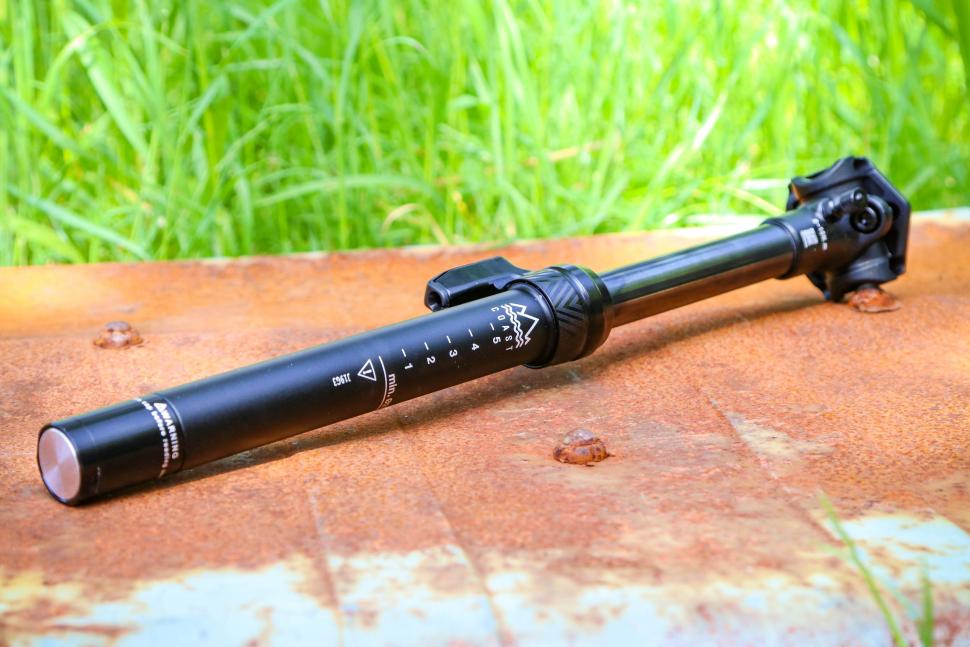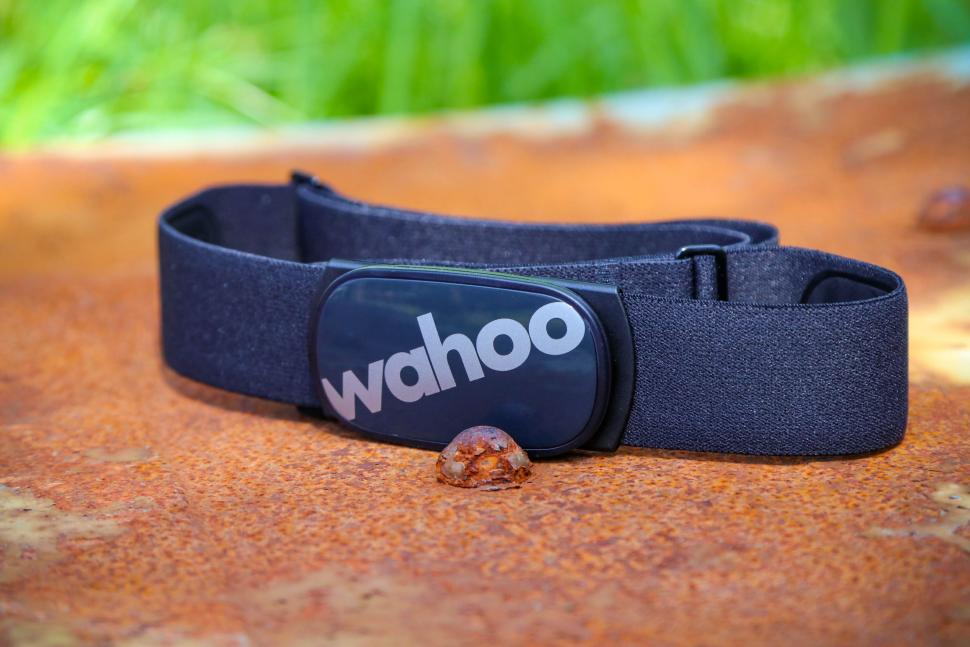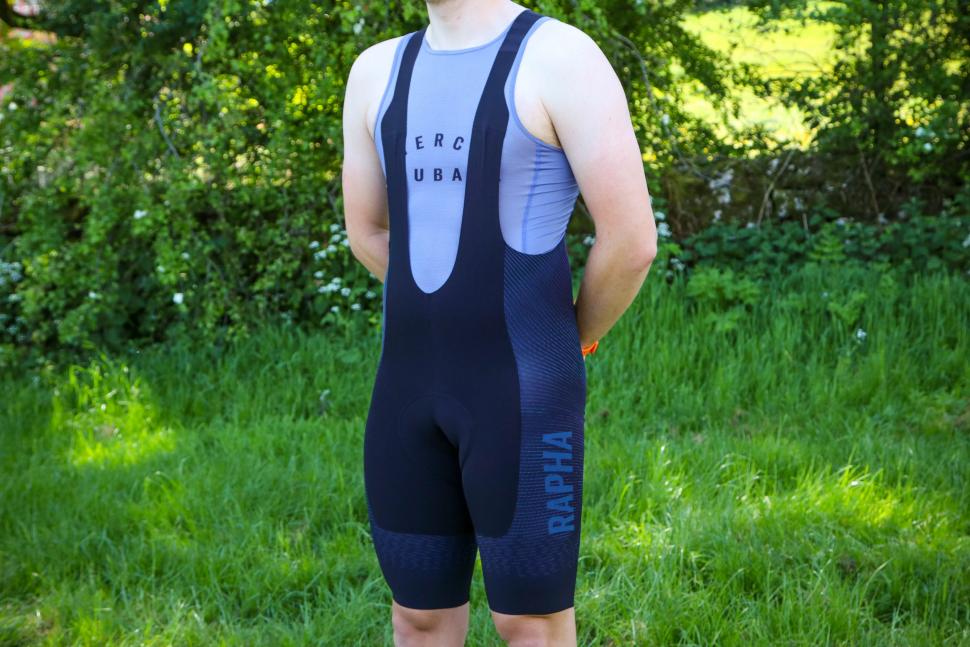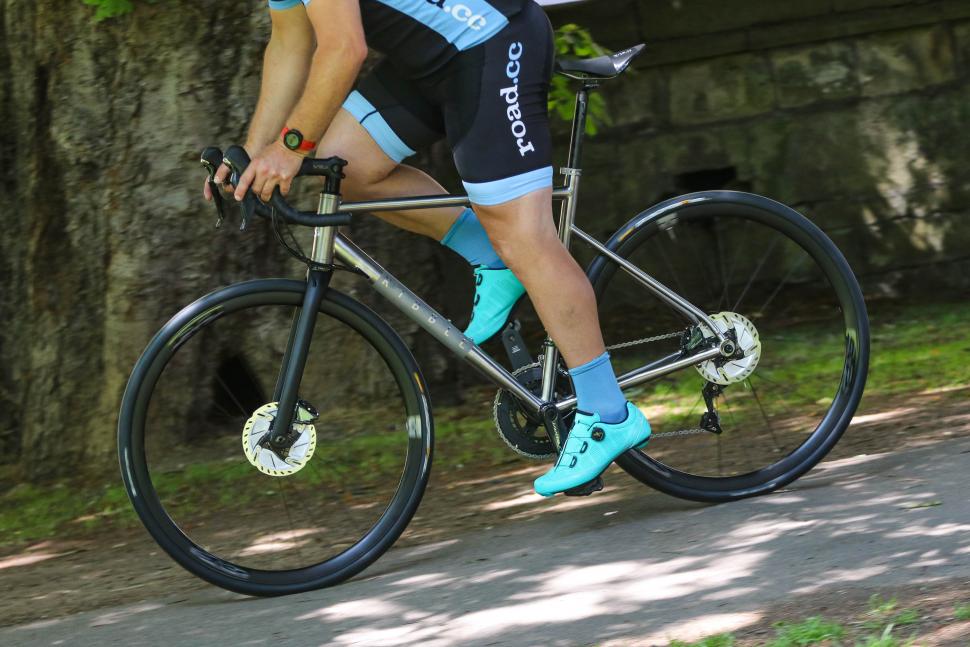- News
- Reviews
- Bikes
- Components
- Bar tape & grips
- Bottom brackets
- Brake & gear cables
- Brake & STI levers
- Brake pads & spares
- Brakes
- Cassettes & freewheels
- Chains
- Chainsets & chainrings
- Derailleurs - front
- Derailleurs - rear
- Forks
- Gear levers & shifters
- Groupsets
- Handlebars & extensions
- Headsets
- Hubs
- Inner tubes
- Pedals
- Quick releases & skewers
- Saddles
- Seatposts
- Stems
- Wheels
- Tyres
- Tubeless valves
- Accessories
- Accessories - misc
- Computer mounts
- Bags
- Bar ends
- Bike bags & cases
- Bottle cages
- Bottles
- Cameras
- Car racks
- Child seats
- Computers
- Glasses
- GPS units
- Helmets
- Lights - front
- Lights - rear
- Lights - sets
- Locks
- Mirrors
- Mudguards
- Racks
- Pumps & CO2 inflators
- Puncture kits
- Reflectives
- Smart watches
- Stands and racks
- Trailers
- Clothing
- Health, fitness and nutrition
- Tools and workshop
- Miscellaneous
- Buyers Guides
- Features
- Forum
- Recommends
- Podcast
TECH NEWS
 2020 Ribble Endurance Ti Disc Enthusiast - full 1.jpg
2020 Ribble Endurance Ti Disc Enthusiast - full 1.jpgFive cool things coming soon from Ribble, PNW, Wahoo, Rapha and dhb
Well it's been a windy old week... but things are looking a bit calmer and dryer over the next few days, so the road.cc test team will be trying to put in as many miles as possible on a selection of shiny new things! Here's the cream of the crop this week.
PNW Coast Suspension dropper post
£267.00
"We developed the Coast because the earth isn’t flat (no matter what those people on Twitter say), it’s kind of bumpy", say PNW... and the result is the world's first dropper post with suspension, claim the US innovators. Designed for all bike types from trekkers, to XC to commuters, the Coast "provides some relief from everyday chatter" thanks to 40mm of tunable air suspension housed within its internals, plus 120mm of drop. The dropper function isn't just for changing positions depending on which gnarly jump you're attempting next, say PNW, as they say it's also very useful for lowering the seat when you dismount to make things more elegant.
Is there a place in the market for this shape-shifting vibration dampener? Find out in Stu Kerton's review coming later this month...
pnwcomponents.com
£39.99
Wahoo have revamped their Tickr heart rate monitor with a new integrated chest strap and sensor design, that they say provides a better connection and more secure fit to prevent sliding and shifting compared to the previous iteration. They also say it's now the lightest and slimmest heart rate monitor strap on the market at just 48g and 12mm thick, which makes it all the more comfortable because you'll hardly even feel it's there. Also new is the two LED lights at the top to confirm the connection status, and it can now connect to multiple Bluetooth-enabled devices simultaneously. Find out if the Tickr gets a tick or a cross from Dave Atkinson in his upcoming test report...
uk.wahoofitness.com
Rapha Pro Team Powerweave bib shorts
£275.00
With just 300 pairs initially available exclusively to Rapha's RCC members at the moment, these luxurious bibs are described as a "breakthrough" and have a rather steep price tag to match. Rapha say the compressive woven fabric on the Powerweave is 20% lighter than the knit on their standard existing Pro Team bibs, and the engineered fit consists of just seven panels to reduce seams and bulk while providing extra compression in the weave to support your aching muscles in the mountains.
They're now the shorts of choice for the EF Pro Cycling team, but should you fork put and make them yours too? The review is coming soon...
rapha.cc
Ribble Endurance Ti Disc Enthusiast
£3,299.00
Ribble only launched the all new Endurance Ti Disc Enthusiast in April, but our lucky reviewer Stu got his hands on one early in time for a full test report this month. Featuring a full Shimano Ultegra groupset, the frame is made for endurance road riding and is described as "wonderfully fast and compliant", and you also get a set of 35mm deep Level alloy wheels to complete the package. There are integrated mudguard mounts if you really must get it dirty, and making things even more comfortable up front is a chunky Endurance Carbon Disc Monocoque fork.
ribblecycles.co.uk
dhb Vector PhotoChromatic sunglasses
£90.00
Instead of needing multiple lenses for differing light conditions, dhb claims their Vector shades do it all in one with photochromatic lenses that adapt to changing light conditions. With super wide lenses that provide plenty of coverage, the lightweight frame has an adjustable nose piece and the lenses are also vented to prevent fogging. Do these shades perform in the sun and when its gloomy out there? Jamie Williams' review is coming soon...
wiggle.co.uk
For all the latest road.cc test reports, head over to our reviews section. If you want some more advice before splashing the cash, check out our buyer's guides.
Jack has been writing about cycling and multisport for over a decade, arriving at road.cc via 220 Triathlon Magazine in 2017. He worked across all areas of the website including tech, news and video, and also contributed to eBikeTips before being named Editor of road.cc in 2021 (much to his surprise). Jack has been hooked on cycling since his student days, and currently has a Trek 1.2 for winter riding, a beloved Bickerton folding bike for getting around town and an extra beloved custom Ridley Helium SLX for fantasising about going fast in his stable. Jack has never won a bike race, but does have a master's degree in print journalism and two Guinness World Records for pogo sticking (it's a long story).
Latest Comments
- mdavidford 3 min 40 sec ago
I quite often hold on to those pedestrian cattle fences you get at crossing points, but these look to be at an awfully uncomfortable height, and...
- stonojnr 21 min 10 sec ago
£459 would be more than cost of the bike I ride to work !!!...
- Velo-drone 23 min 21 sec ago
I think you'll find that refugees most places are often very grateful for a bike....
- stonojnr 28 min 7 sec ago
It's usually a sign they've changed the production manufacturers, who have slightly different sized generic templates for jerseys, as you don't get...
- GMBasix 1 hour 36 min ago
Nice set of links there. Worth reading, although sadly time prohibits for now. Unfortunately I can only like once.
- Keesvant 1 hour 36 min ago
Yes, i use a bolt v1 too....
- Vo2Maxi 2 hours 3 min ago
The one thing that has always intrigued me:...
- Rendel Harris 2 hours 28 min ago
Yes, I gave a reasoned reply before I had seen their other comment!





Add new comment
30 comments
How much do Rapha bellends love the brand to pay £275 for a pair of shorts while the rest of the cycling population laugh at you? There must be an easier, and cheaper, way to say i've been into cycling for 5 minutes.
Isn't this just reverse snobbery? Would you say that someone *shouldn't* get (picking a bike out of hat) a Di2 Synapse as their first road bike 'cos cheaper bikes are available?
Too rich for my blood, certainly, but 275 notes is hardly fin-de-siècle excess.
Wondered how long it'd take.
All the other big brands have shorts as ridiculously expensive (pro spec, innit) yet never get this reverse snobbery.
Their shorts start at £85 RRP, and are pretty good btw.
If it's too expensive for you I understand. Maybe a Rolls Royce is out of your price range too. But please don't sneer at excellence, because it sounds like jealousy.
I own Rapha kit for 3 reasons, quality, comfort but more importantly their free repair service, this really is a seller. I have had a hardshell jacket, classic jersey classic bib shorts 3 times and pro bibs shorts once, all repaired due to accidents, all repaired to a high standard and free. Consider that the next time you are sliding on your arse ripping your bib shorts and jersey.
One pair of bibs are @ 7 year old and still good.
It all depends on your riding but hear hear to compact corned beefs comments.
Assos also have a repair service, and their top end bibs are a mere £255 for those who consider these Rapha ones to be obscenely priced
I've a pair of dhb bibs that are 6 years old and still good, 60 quid was a bargain
Galibier.cc do a free repair service on all thier products. At a third of the price of Rapha.
Would love an honest take on why the lowered seat stay on the ribble was necessary. Personally, I think it's a needless "feature". If it were to save £10 off manufacturing cost, I'd understand. Otherwise, please explain why it was necessary to construct the frame in such a way.
There's no "need" for it - or for any triangles in a frame at all, they're not "necessary". The normal reasons given for dropped stays are aerodyanmics (hardly a factor in this sort of bike you'd imagine) and increased compliance in the seat post (which might well be).
If you don't like, fair enough.
It's just fashion, isn't it. You need some sort of incremental improvement to sell new frames, a smaller triangle should in theory be stiffer for the same tube thicknesses but mainly because everyone else has dropped seatstays you have to keep up. We've been here with curved tubing to add compliance, then straight tubes to improve stiffness and responsiveness, thinner seat stays and posts to soften things up again, now dropped stays to stiffen the rear end. Welcome to the bicycle industry, where not just the wheels go round
It seems to be partly fashion, perhaps for a reason, but also you can tweak how the structure reacts which may be useful - and affect things like aerodynamics for those fast enough to take advantage, and professional enough to need to. We can all pretend changing the frame structure doesn't make any difference though, seems popular enough.
There's tons you can do to tweak and tune the feel of a bicycle frame by slightly altering aspects like triangle sizes, tube diameter, wall thicknesses and so forth. Do you think the frame manufacturers are tweaking each frame they make to alter the characteristics for each size they release each season though? Ordering in 1000 each of 6 different tube types instead of 6000 of 1? I'd be very impressed if they did
Of course "there's tons you can do to tweak" the frame characteristics, never said otherwise. Dropping the stays, or adding a pivot like Trek, is just a really gross structural way of adding them that doesn't necessarily need the time or expense of fine tuning and/or butting of individual tubes. Not seeing your logic really - there are other ways of altering frames response so this can't be doing anything ? Let us know what i'm missing (and, no, it's not the fashion aspect - already said that most likely an influence as well).
Some manufacturers also do indeed size the tubing to max the size of frame - something that appears to becoming more popular outside of bespoke frame makers.
Sure, dropped stays will have some sort of effect - doing anything differently will have an effect. What's debatable is whether these effects are tangible to the rider, at least as much as to describe one being "better" than the other. Every year a new frame comes out and it's better, more aero, more compliant, more stiff than anything we've ever seen before - it may well be, but if it looks the same as last years it isn't going to sell. So we see curved top tubes, wobbly stays, compact frames, aero top tubes, dropped stays, straight tubes, squoval tubes, kammtail tubes, each time better than last years in some way - and there's nothing wrong with any of this, if you're buying a bike you want to feel like you're getting something modern and cutting edge even though genuine technological breakthroughs are relatively rare, and dropped stays are a very current look. Give it a few years and there'll be a reason why they aren't as good longer stays, we've already seen the Team GB track frames go, literally, the other way
In the case of the seat-tube pivot, it's been shown to have a measurable effect and also one that seems to be appreciable to the rider (rider perception considered). The dropped stay is supposed to have a similar, but smaller effect (depending on location, top-tube etc), on the fore-aft movement for a given seat-tube - i've heard some of the manufacturers claims but not seen any evidence on compliance, so I would only be going on perception as to whether it amounts to much. Physics say it probably should in some cases, i'd wait until I saw any testing before ruling it in or out. Aerodynamics is a different question - that does appear to have at least some figures to back up the claims for dropped stays modulo tester bias.
Track bikes still appear to be using all sorts, including dropped stays (e.g. Cervelo, Look, Argon) along with some experimentation with specially shaped raised (more vertical) stays (e.g. Lotus). Things probably will change - they found that Y was better than X, and used that for a bit, then found Z was better than X and started using that. That doesn't mean that Y was purely fashion, it just got superceded when people experimented more.
Anyway, i'm out of here - the OP asked whether there was any reason for the arrangement, I replied that there is and what it might be. The reply from someone was it's only fashion, nothing else. People can believe what they wish but at some point in time physics and reality have to be acknowledged rather than completely ignored - questioned, yeah, but not dismissed out of hand because something else can do the same. Whatever.
Cheerio 👋
My understanding is that the lowered seat stay creates a stiffer rear triangle for lateral response, whilst offering vertical flex and comfort. BMC were the first to design and manufacture their frames like this, and their patent expired a couple of years ago, hence all the other manufacturers (Ribble, Cannondale, Specialized etc.) are all at it now. Makes sense for an Endurance bike if you believe the hype over a traditional diamond.
I don't believe the hype sorry. It's just a fad.
A few years ago it was the wavy forks and rear stays of Pinarellos. Then before that we had oval chain rings for better power delivery. L shaped cranks and other rubbish.
The industry needs to churn the base to keep the senior people in dividends and yachts.
The only people actually hyping it appear to be people telling others that it's only fashion and has no purpose. It might be partly the former, as I said, but it can also have the latter.
They weren't, really - you see dropped stays going back decades. GT had plenty of triple triangle frames, Colnago Equilateral, Gitane offered them, even Raleigh had slightly lowered stays on their mk2 pros
And there was the MBK HPF (High Power Frame), must have been late 80s I think, which had dropped stays just like these bikes.
It seems to have taken a while to develop a suspension dropper post.
I wonder if it will be any good.
Having followed this product for over a year, it's seems it's a bit compromised being undamped and very pressure sensitive - any sag and it bobs too high and it doesn't move. Be interested to see what a journalistic review concludes.
I'd be keen to know especially, how quickly do they return to clear when you cycle into the shadows?
I've got a couple of photochromic pairs of glasses (Uvex) and they typically take about 30-60 seconds to react, though I don't really notice unless it's a dramatic difference in light conditions.
I don't think any glasses change that quickly.
Oakley Transitions are quicker than my Oakley compatible photochromics but they were about three times the price.
Hardly a scientific analysis, but I had a pair of these on for an 80km ride recently, some lanes, some city, and I essentially forgot I was wearing them. Never felt like they should have been darker/clearer.
Yeah I've never had an issue with my photo chromatic lenses, I think it's rare that they ever go as dark as they possibly can, unless you've got the sun actually shining in your face, plus your pupils react so quickly to adapt for light anyway that they compensate far more quickly than any lenses possibly could. The difference is brightness between cycling out in the open and under tree cover is usually far less than if you walk indoors, unless you've ridden into some really densely wooded area.
The Road guys have the ultimate test on their doorstep: ride flat out into the Combe Down tunnel and see how long it takes to be able to see anything...